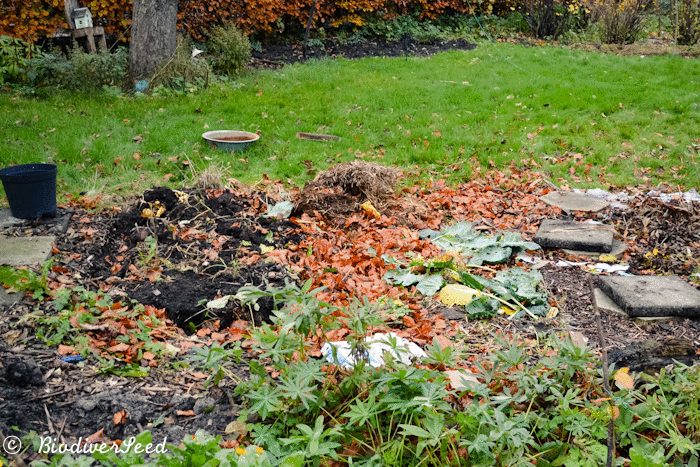
This past spring, I found myself overwhelmed with strawberry runners. I also had in my possession a salvaged piece of concrete sewer piping and an abundance of rotting wood. The wheels in my head were turning. I knew from building an herb spiral that the concrete piping had a high ambient heat capacity, which can be used to create a warm microclimate for plants. I also knew from using hügelkultur in the garden that rotting wood is an excellent, nutritious, moisture-retentive substrate, and the fungal mycelium that colonizes decaying wood also benefits bees.
Putting these things together, I improvised what I’ve come to call the “strawberry snail,” a small, terraced, raised-bed garden that was incredibly productive this year.
This simple garden provides excellent drainage, increases the plantable surface area by using vertical space, and allows the fruits to droop off the structure instead of coming into contact with the soil and rotting. Generally, strawberries naturally live on the forest floor, so they do well in the presence of decaying wood.
Because the concrete in the center of the spiral passively accumulates solar energy in the form of heat, strawberries in this bed ripened before those in all other beds. I grow strawberries everywhere in my forest garden, so the sample size and diversity of conditions to which I compared this harvest is not insignificant.
This snail design also has the advantage of staggering a strawberry harvest. With June-bearing strawberries, the amount of simultaneous fruit can be overwhelming, necessitating a bout of canning, preserving and freezing in order to avoid wasting the excess. I found that because of the differential sun exposure, blooming and ripening travelled from the warmest, most exposed section to the coolest, least exposed section, creating a more constant supply of fresh fruit over an extended ripening period. Again, similar to the herb spiral, this garden operates with microclimates.
The compact nature of a snail garden also allows for the entire thing to be netted against birds; consequently, I didn’t have to share the harvest as much as I had in previous years.
If I had really thought ahead, I would have used fresher timber for the terraces, and inoculated it with shiitake mycelium. It would have been interesting to integrate edible fungus cultivation in to the structure to make the space more efficient. That’s another experiment for another day!
To replicate something like this at home or in an urban garden, I’d recommend stacking rocks or concrete to create a central pillar or pyramid, which will allow for excellent drainage and ambient heating. The terraces are simply made with soil and horizontal logs to prevent erosion while the plants are being settled. Eventually, the plants send roots into both the soil and the decaying wood, essentially gluing the garden together. This garden is part raised bed, part vertical garden and part hügelkultur. It’s really just a collection of permaculture principles applied to the free materials I had on hand!




